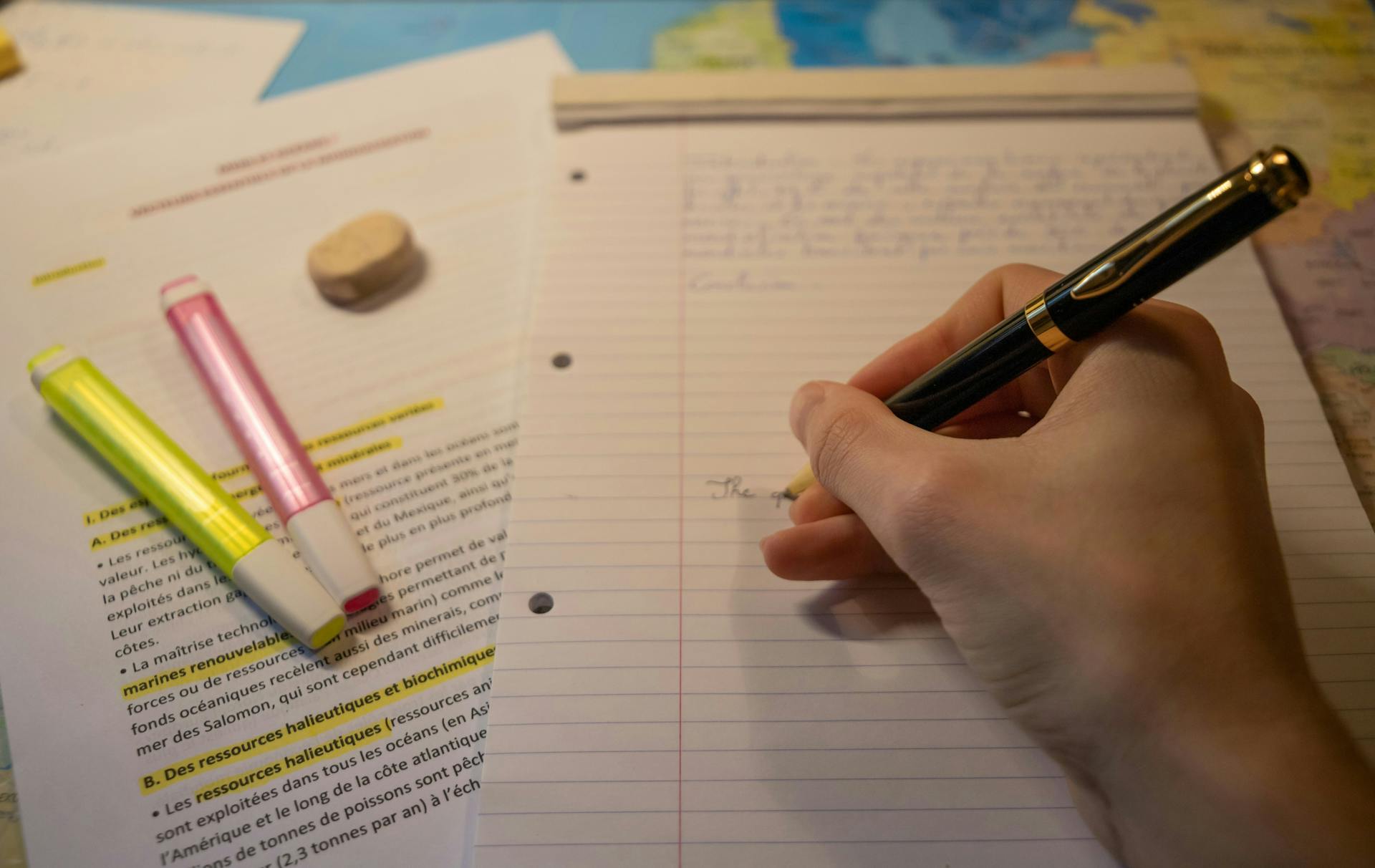6 Ideas to Create a Study Space at Home (Without Breaking the Bank)
Find your Smart Storage™ unit.
We have locations across the United States providing onsite StoreEase Virtual Customer Service™ and 2 Minute Move In® contactless rental.
We have locations across the United States providing onsite StoreEase Virtual Customer Service™ and 2 Minute Move In® contactless rental.


Setting up a dedicated study space doesn’t mean building a home office or investing in a full room makeover. In most homes, space is limited and often already serves multiple purposes. The good news is that you can still create a functional, comfortable study area using what you already have.
Read on for six simple ideas that can help you create a study space at home without having to empty your wallet.
A corner of the dining room, a small section of a bedroom, or even a cleared shelf in a hallway can make the perfect study space. The goal isn’t perfection; it’s consistency. If your child knows where to go when it’s time to work, that predictability helps build habits.
Look around your home and find a spot that’s free of distractions. Avoid placing the study space directly in front of the TV or in high-traffic walkways. Lighting matters too. Natural light is ideal, but a small desk lamp or clip-on light can do the trick if needed.
For families with more than one child or those managing tight quarters, consider portable setups. A rolling cart with school supplies, a fold-out lap desk, or a backpack system that “pops up” when it’s time for homework can all help create a routine without taking over your space.
You don’t need designer furniture or a custom-built desk to create a great study space. A small table or even a sturdy folding tray can work. What matters most is that your child has a surface to write on and a chair that supports their posture.
Repurpose where possible. An unused side table, an old coffee table, or even a shelf mounted at child height can be repurposed as a functional desk. Make sure it’s comfortable enough for your child to sit and focus, but not so cozy that they end up napping.
If you’re shopping for furniture, look at secondhand options or community marketplaces. Many families sell or give away kid-sized desks and chairs in good condition. A quick coat of paint or a simple wipe-down can make a used item feel brand new.
Try to keep the setup simple. A table, a chair, and a lamp are usually enough. Add a small drawer unit, a plastic bin, or a magazine holder to keep notebooks and pencils within reach.
Kids are more likely to use their study space if it feels like theirs. That doesn’t mean adding distractions, but a few personal touches go a long way. Let your child choose a pencil cup, pick out a favorite notebook, or hang a photo or drawing near the workspace.
This can also help with transitions. If school and home blur together, especially for families doing hybrid or virtual learning, having a distinct space can make it easier to focus.
Keep decorations minimal and functional. A small whiteboard, corkboard, or calendar gives kids a place to write down assignments and deadlines. If your child prefers visual reminders, try color-coded sticky notes or fun clipboards to sort tasks.
Make the space feel clean and uncluttered. Too much visual noise can become a distraction. One or two meaningful items are enough to make the area feel welcoming without being overwhelming.
One of the best ways to support learning at home is to make sure everything your child needs is easy to find. That means organizing supplies in a way that they can maintain themselves.
Start with the basics: pencils, erasers, crayons, scissors, glue, notebooks. They should live in the same spot every day. Use labeled bins, drawer organizers, or repurposed containers to keep your belongings organized and tidy.
For younger kids, clear containers or color-coded labels help them see what goes where. For older students, small drawers, desktop organizers, or hanging file folders can help keep papers and tools organized.
Avoid letting the study area become a drop zone for toys, food, or clutter. If your child works best in a shared space, such as the kitchen table, use a portable bin or box that holds everything they need and can be easily moved when it’s time to eat.
Creating a setup that’s easy to reset helps your child develop habits that support their learning without adding daily cleanup stress.
A quiet study space doesn’t have to be silent, but it should minimize distractions. Start by turning off background noise, such as the television or nearby conversations. If that’s not possible, headphones with soft music or ambient noise can help drown out chaos.
For some children, fidget tools or flexible seating options, such as wobble cushions, can help them stay focused while still allowing them to move. Others may benefit from sitting at a traditional desk with minimal movement.
Try placing the study space near a window to benefit from natural light, but position the desk so that it faces away from distractions outside. Use a curtain or room divider to create a visual boundary in shared spaces.
If devices are part of schoolwork, use parental settings or simple browser extensions to block sites that might tempt your child to wander off task.
The best study spaces are used regularly, not occasionally. That starts with creating a routine your child can follow. Pick a time for homework or reading that stays consistent. That might be right after school, after a snack, or before dinner, whatever works best for your family rhythm.
Encourage your child to go to the same space at the same time each day. Over time, their brain starts to associate that location with focus and productivity. It doesn’t need to be long sessions. Even 20 focused minutes in the same spot can help build momentum.
This routine can also help avoid the nightly battle of asking, “Have you done your homework yet?” When study time is already built into the day, it becomes less of a chore and more of a habit.
Make sure your child knows that the study area is always available for schoolwork, reading, or creative projects. When the space is associated with more than just worksheets, it feels like part of their world, rather than an extension of school.
If you’re finding it difficult to create space for studying due to clutter or limited room, off-site storage can be a helpful solution.
Many families use StoreEase to temporarily store out-of-season items, excess furniture, or gear that doesn’t need to live at home year-round. If your child is growing and you’re still using baby gear, or if your shared office is cluttered with boxes from a recent move, clearing that out can make room for a more functional setup.
A small, climate-controlled unit allows you to store items safely without having to give them up completely. That can free up closets, corners, or even entire rooms to better meet your current needs. With StoreEase’s convenient access and tech-enabled entry, you can visit your unit at your convenience.
Study spaces work best when they’re part of an organized home. If you’re overwhelmed by clutter, storage might be the tool that helps you get back on track.
Knowing how to set up a study space for kids isn’t about following a strict formula. It’s about understanding your child’s needs and building something that supports them on a day-to-day basis.
That may mean converting a corner of the kitchen into a temporary study area. It could mean carving out a quiet bedroom nook and adding a few touches to make it feel complete. Maybe it’s as simple as clearing space on a shelf and keeping a bin of supplies nearby.
There’s no need to overcomplicate it. The goal is to create a space that your child feels comfortable using, which in turn makes it easier for them to focus, complete their homework, and stay organized.
If creating that space means making room elsewhere, StoreEase can help with that part of the puzzle. Find a location near you and see how flexible storage can support your family’s needs this school year and beyond.